Effective mid-funnel marketing can make or break your customer’s journey.
It’s not enough to generate leads and push for the hard sell all the time.
“My name is_____. Your place or mine?”
This may work in the movies but it’s unlikely to work in the real world and it’s not going to lead to high-quality customers.
Instead, it’s crucial to implement highly targeted mid-funnel marketing tactics that build trust and convince mid-funnel leads that your product is the best solution for their needs.
Why are both things important?
The first relationship marketing principle states: Attract the right customers, for the right reasons. This is because most loyalty problems can be traced to a flawed sales process. And loyal customers contribute to revenue in five ways so getting this sorted out matters.

To help remind you, we created a handy infographic that lists the five relationship marketing principles. Subscribe to our list and we will be happy to give it to you as a PDF.
Mid-funnel marketing occurs after your audience becomes aware of and engages with your brand. At this stage, mid-funnel leads are curious about your offer, they’ve demonstrated their interest and willingness to learn more about you. But they are also evaluating your products against the competitors in your niche. Therefore, it’s essential to take the time to develop a mid-funnel content strategy that builds trust and wins their business.
In this article, we’ll discuss what mid-funnel marketing involves and its relevance to the customer journey. We’ll also talk about three essential tactics you should know.
Let’s get started!
The value and importance of Mid-funnel marketing are vastly underestimated. See how mid-funnel marketing tactics can drive conversions and nurture long-lasting relationships. #smallbusiness #digitalmarketing Share on XWhat Is Mid-Funnel Marketing?
Mid-funnel marketing is the bridge between the initial contact with your brand and the final purchase. It involves reaching out to top-funnel leads, especially the leads that are in your database, and getting them to engage with you. You want to nurture the relationship and build trust. Remember, 90% of loyalty problems can be traced to a flawed sales process.
Mid-funnel marketing aims to align your potential buyers’ needs and their corresponding journey with your offerings. You can think of it as giving your leads a series of gentle pushes to convince them that they need your product in their lives. Therefore, mid-funnel content is usually educational, entertaining, interactive, and highly targeted.
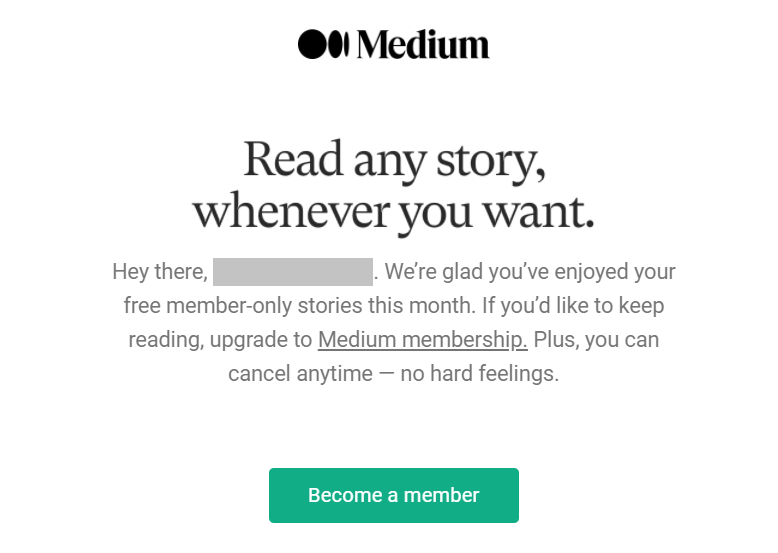
Mid-funnel leads are already familiar with what you do. You don’t need to tell them about your products’ obvious benefits. you need to provide them with more in-depth information about the value they’ll get when they become paying customers. Eventually, your readers should see you as the expert in your niche, providing the optimal solution to their problems.
Pro Tip
For mid-funnel marketing tactics to be effective, it’s not enough to lure potential buyers with an occasional discount. Instead, each activity should nurture your customer’s journey and aim to create long-lasting relationships. Once you establish trust and deliver value beyond your product’s transactional benefits, you will attract loyal customers who will become brand advocates.
A Brief Overview of the Key Marketing Funnel Stages
Before we dig into the best mid-funnel tactics you should know, it’s crucial to understand each stage of your customer’s journey. Every step comes with different objectives and expectations, so it’s wise to familiarize yourself with the entire funnel before you proceed to bombard your customers with random content.
The diagram below illustrates the different types of behavior customers typically go through before deciding to purchase a product or service:
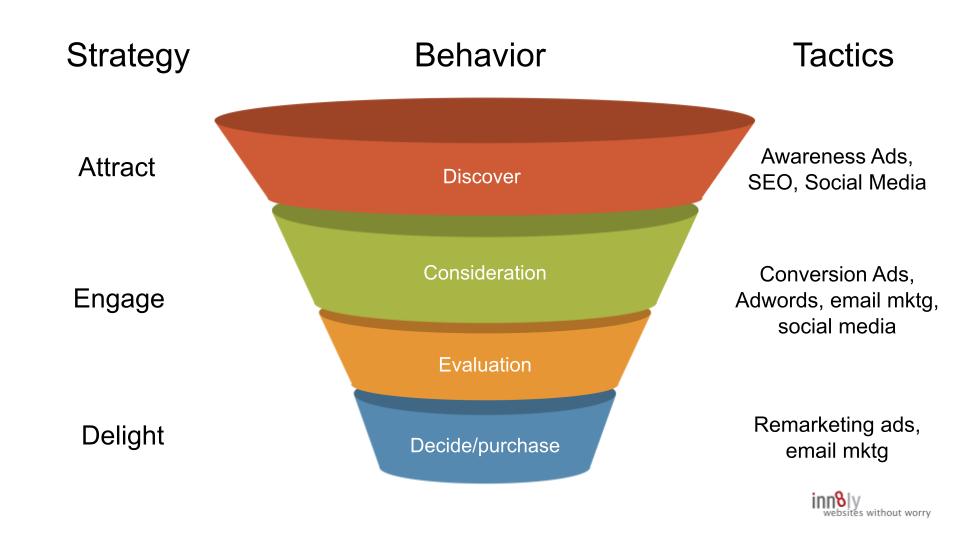
As you can see, every step of the journey requires different communication tactics. The top is all about attracting high-quality traffic. The middle is where you build trust, and lower funnel marketing tactics create mutual value and value for your customers and for your business. For more on Traffic, Trust and Value (TTV) read Effective Digital Marketing Funnels Balance Traffic, Trust, and Value.
Now, let’s look at each stage in more detail.
Top of Funnel Prospects
As your potential customers enter this stage, they are typically a referral, or they’ve seen a post or an awareness ad on social media, or your page has appeared in search engine results. It’s likely that this is the first time your audience hears about you, so the goal is to educate them about what you do and the niche you represent.
The customer is still discovering your services and is not ready to purchase. Therefore, social media or Search Engine Optimization (SEO) practices are the most effective tools for creating awareness about your brand and capturing new leads.
Companies often achieve that with free offers in exchange for an email subscription, such as webinars, online courses, or e-books. For instance, this ClickUp ad aims to attract potential customers with a free product road mapping tool:

People interested in product management will likely be curious about this offer, so they’ll sign up to try it out. Once they become subscribers, it’s easier to move them further down the funnel with carefully executed email marketing campaigns.
Mid Funnel Leads
At this stage, your mid-funnel lead has probably seen your ads or tried your free offer. They might also want to learn more about your business and evaluate your products against the competitors before they commit financially.
Therefore, it’s crucial to craft a unique value proposition and demonstrate how your product can solve your customer’s problem. For instance, ClickUp’s ad above promises simple product management and faster shipping.
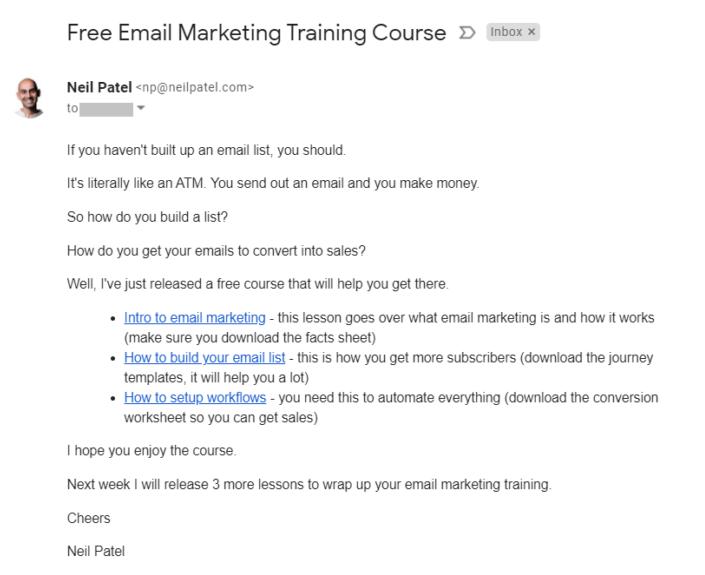
Your lead is likely evaluating your services and researching the market for alternatives, so your main objective should be to engage your audience with valuable content. You might use a combination of more targeted conversion ads, social media marketing, and email campaigns, such as this free course offer from Neil Patel.
Keep in mind that it’s not all about the hard sell. Instead, your content should keep creating value beyond the transactional benefits, as we mentioned earlier.
Lower Funnel Conversion
Finally, your prospect reaches the bottom of the funnel, where they are ready to commit and buy your product or service. At this stage, your business objective should be to delight them with a generous discount or an irresistible offer, and show them that you value their feedback.
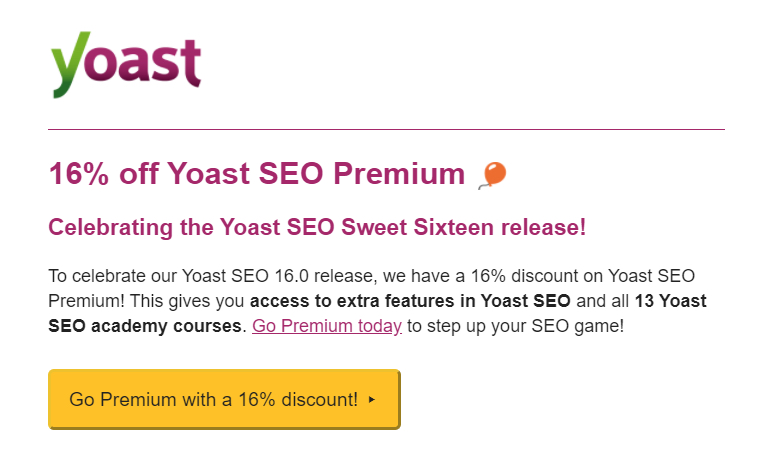
It’s also wise to ensure that the path to purchase is clear and simple, with a solid Call To Action (CTA) so there are no obstacles to buying.
Remarketing campaigns can also help convert your subscribers who have not engaged in a long time. For instance, you might offer your existing clients an upgrade or ‘seal the deal’ with a special offer, creating a Fear Of Missing Out (FOMO) effect:

However, don’t jump straight to the lower funnel. Even the most lucrative discount may have little effect on customers who don’t understand your product’s actual value. As I’ve already said, but it’s worth repeating most loyalty problems can be traced to a flawed sales process. Therefore, put extra effort into your mid-funnel tactics. Use them to stimulate microtransactions, the small decisions that build trust, and a relationship that goes beyond the transactional.
3 Top Mid-Funnel Marketing Tactics Every Marketer Should Know
Now that we’ve briefly explained the entire customer journey, let’s look at three effective mid-funnel marketing tactics to help engage and nurture your audience.
1. Case Studies and Customer Success Stories

Customers have lots of information right at their fingertips, so they can make informed decisions about their purchases. If they’ve never heard about you, they’ll likely Google for reviews and search for social proof to see if your product delivers on its promise.
You can address this concern by gathering case studies and customer testimonials that you can feature on your website or include in your email marketing campaigns. For instance, P.Volve welcomes its new subscribers with real-life fitness transformation stories.

Usually, quoting specific numbers works best as it helps your potential clients picture their future results. For instance, this online fitness coach regularly uses this tip on her Instagram account:
Each customer success story should clearly illustrate a specific problem they had and how your product helped them solve it.
Another excellent practice is to showcase your services’ immediate benefit, and the ‘benefit of the benefit.’ For instance, many fitness case studies often point out that the customer lost weight and felt stronger, more energetic, and happier as a result.
The story told in the case study should always be the customer’s story. This is an outside-in exercise.
2. How-To Articles and Other Instructional Content
Now that your prospects have seen your case studies, they probably want further proof that your brand is trustworthy. An excellent way to achieve that is to establish yourself as an expert in your niche through instructional and educational content.
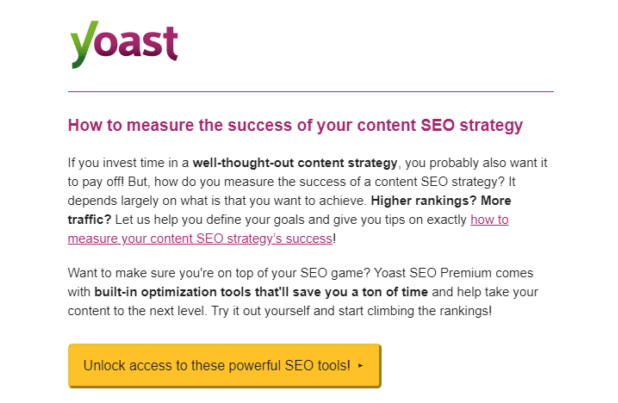
For instance, Yoast often provides how-to materials, which positions the company as a go-to SEO authority:
For best results, include relevant statistics and outbound links to high-authority sources. In fact, this tactic is so effective that over 55 percent of marketers say educational blog articles are their top priority for inbound marketing, bringing in three times more leads than traditional advertising.
Other types of content that fall into this category are FAQs, fact sheets, checklists, and infographics. In essence, anything that helps answer your customers’ questions is a highly valuable tool that builds trust and guides your prospects further down the funnel.
3. Product Guides, Reviews, and Comparisons
Finally, prospects in the middle of the funnel will eventually want to evaluate and research similar companies in your niche to ensure that they’re getting the best value for their money. At this stage, they are probably convinced they need a product; they just don’t know which one they should get. Therefore, it’s wise to embrace this behavior and tell your audience why you’re the best.
For instance, Chanty establishes itself as a worthy alternative to popular team management and productivity tools with a series of product comparison articles:
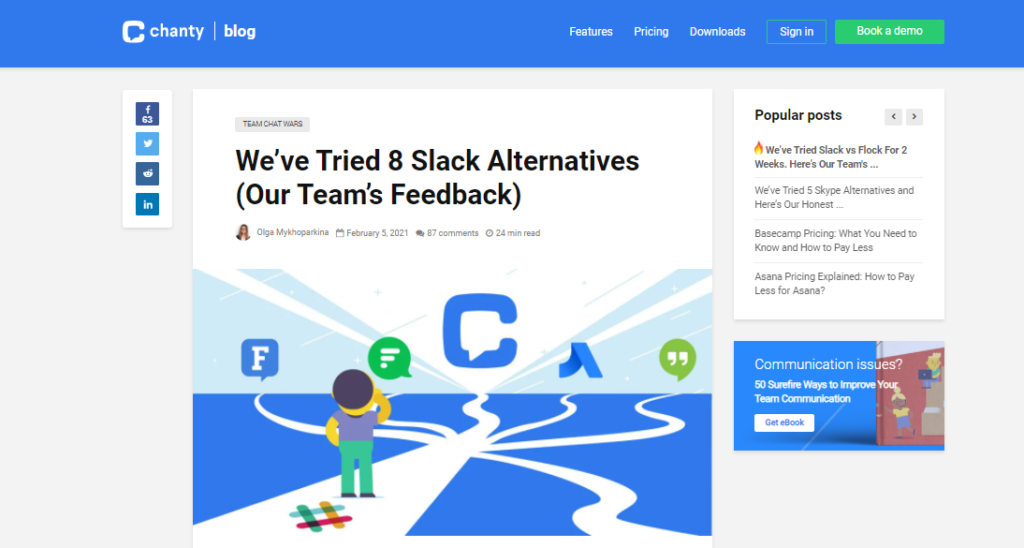
This type of content typically focuses on features, price, and value. Demonstrating how your product stacks up against the competition shows transparency and further boosts trust.
Besides, shopping comparisons help align your content with the buyer’s intent, enabling you to move prospects to the bottom of the funnel. For instance, you could show them all the benefits they will get if they choose your product.
Product guides are also an excellent way to clear up potential doubts or concerns before your customer makes the final decision. While honesty and transparency are critical, you’re still in control of your content, so make sure to highlight your strengths and emphasize your unique value proposition. Another bonus is to include ratings and reviews, giving your prospect a complete picture of what they’re getting.
Mid-Funnel Marketing – Conclusion
The marketing funnel is the process where qualified prospects are attracted to the brand or service, trust is created through microtransactions, and value is exchanged for a product or service. You can learn more by reading The Marketing Funnel Explained.
The marketing funnel has three stages: Top of Funnel, Middle of Funnel, and Bottom of Funnel. The numbers are higher in the TOF stage. The quality of prospects increases as prospects move through the funnel. Learn more by reading Effective Digital Marketing Funnels Balance Traffic, Trust, and Value.
An effective marketing funnel recognizes that its purpose is relationship building. Start by attracting prospects by tapping into their needs. Build a relationship with them by exchanging value by stimulating mid-funnel microtransactions. The interplay of marketing tactics and relationship marketing principles is described in this post, Use Relationship Marketing Principles for More Effective Marketing and Sales Funnels.
Mid funnel marketing is the deliberate attempt to stimulate microtransactions of increasing value between qualified prospects and your brand or service. Mid-funnel marketing provides a path for top-of-funnel prospects to the final sale. Mid-funnel marketing builds trust which fosters long-term customers.
The value and importance of mid-funnel marketing are vastly underestimated. Most marketers focus mainly on growing awareness and generating leads, forgetting that a top-of-funnel lead might need additional encouragement to actually purchase your product or service. A carefully executed mid-funnel marketing strategy will help drive high-quality conversions and nurture long-lasting relationships.
In this article, we explained what mid-funnel marketing is and why you shouldn’t overlook it when planning your content strategy. We also discussed three effective mid-funnel marketing tactics. To recap:
- Case studies and customer success stories demonstrate that your product is the best solution for your prospects’ needs.
- How-to articles and other instructional content help you establish trust and expertise in your field.
- Product guides, reviews, and comparisons enable you to show your strengths and highlight your unique value proposition.
Do you have any questions about mid-funnel marketing? Go to VIPChatWithJames.com. We would be happy to help.
Profitable Google Ads – 7 Steps to a Revenue Faucet
Learn how profitable Google Ads Search campaigns are possible and likely if marketers are patient and make data-driven adjustments.
Want to Increase Marketing Effectiveness?
Maximize marketing ROI with performance tracking.
Unlock the Power of Email Marketing for Your Business
This power and importance of email marketing to your business success.
Author: James Hipkin
Since 2010, James Hipkin has built his clients’ businesses with digital marketing. Today, James is passionate about websites and helping the rest of us understand online marketing. His customers value his jargon-free, common-sense approach. “James explains the ins and outs of digital marketing in ways that make sense.”
Use this link to book a meeting time with James.

